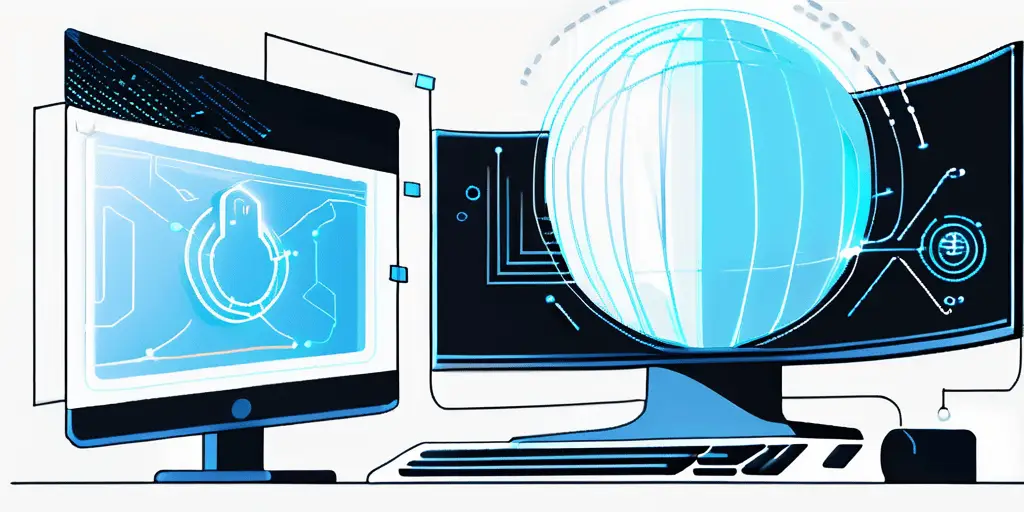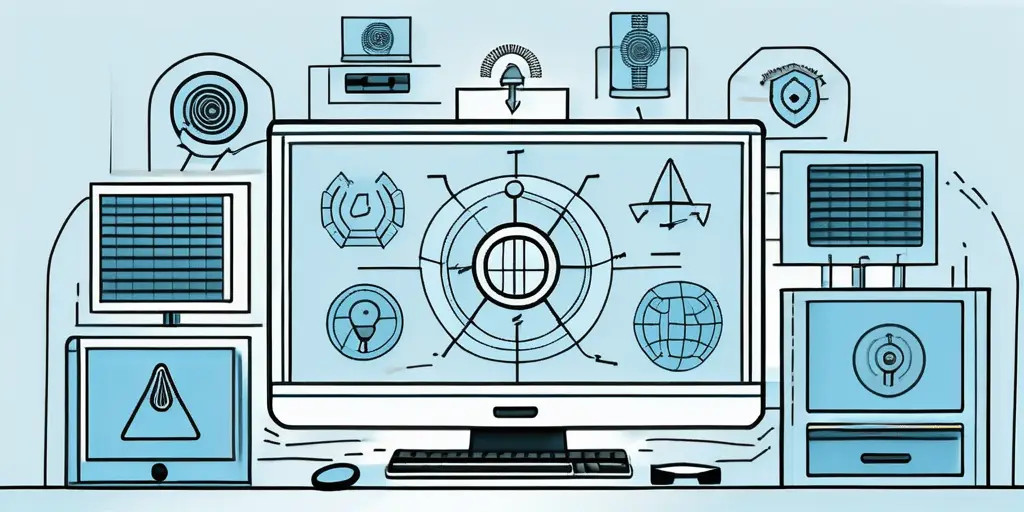Replay attacks pose a significant threat to our increasingly interconnected world. In this article, we will delve into the intricacies of replay attacks in cybersecurity, exploring their definition, mechanism, potential impact, prevention strategies, and the future of this evolving threat.
Defining Replay Attacks
Let’s start by defining what a replay attack is. At its core, a replay attack involves the unauthorized interception and then subsequent retransmission of a data packet or communication. The aim is to deceive the recipient into thinking that the maliciously intercepted and resent data is legitimate and trustworthy.
Replay attacks can be particularly harmful when sensitive information, such as financial transactions or personal data, is involved. By replaying legitimate data, attackers can gain unauthorized access, manipulate systems, or even impersonate users, leading to potential security breaches and fraudulent activities.
The Basic Concept of Replay Attacks
Imagine sending a message to a friend only to have a third-party eavesdropper intercept and record it. That eavesdropper can then “replay” the message back to your friend, making it seem as though you have sent multiple messages when, in fact, you only sent one. This is essentially what happens in a replay attack in the digital realm.
One of the challenges in preventing replay attacks is ensuring the integrity and confidentiality of data during transmission. Encryption techniques, secure protocols, and timestamp verifications are commonly employed to mitigate the risks associated with replay attacks and safeguard the authenticity of communications.
Key Terminology in Replay Attacks
Before we delve deeper into how replay attacks work, it’s important to familiarize ourselves with some key terms. The first is the “attacker” or “adversary,” the individual or group performing the replay attack. Next, we have the “victim,” the unsuspecting party tricked into accepting the replayed data as legitimate. Finally, there is the “replayed data,” the intercepted and resent information that forms the basis of the attack.
Understanding these key players and components is crucial in developing effective countermeasures against replay attacks. Organizations can better protect their systems and data from the detrimental effects of replay attacks by identifying potential vulnerabilities in communication channels and implementing robust security measures.
The Mechanism of Replay Attacks
Now that we understand the basic concept, let’s look at how replay attacks work and the role encryption plays in their execution.
Replay attacks are a type of network attack where an attacker intercepts and maliciously retransmits data that was already exchanged. This attack can be particularly dangerous because it can lead to unauthorized access, data breaches, and other security threats.
How Replay Attacks Work
The process of executing a replay attack involves the attacker intercepting a legitimate data packet or communication and then replaying it at a later point in time. Unaware of the malicious intent, the victim accepts the replayed data, assuming it is authentic. This can have disastrous consequences, especially when sensitive information is involved.
Attackers can execute replay attacks in various ways, such as retransmitting captured authentication tokens, repeating encrypted messages, or resending previously recorded network traffic. By exploiting communication protocol or system vulnerabilities, attackers can manipulate the replayed data to achieve their malicious objectives.
The Role of Encryption in Replay Attacks
Encryption plays a crucial role in replay attacks, both in the interception and subsequent replay phases. When an attacker intercepts encrypted data, they aim to capture the encrypted payload and any associated cryptographic information. By replaying the encrypted data, they can exploit vulnerabilities in the decryption process, deceiving the recipient into processing the replayed data as genuine.
Encryption is used to protect data confidentiality and integrity during transmission. However, in replay attacks, encryption alone may not provide sufficient protection. Attackers can leverage weaknesses in encryption algorithms, key management practices, or implementation flaws to bypass encryption controls and successfully execute replay attacks.
Potential Impact of Replay Attacks
The potential impact of replay attacks cannot be understated. These attacks can potentially disrupt various industries, compromising sensitive data and undermining the trust we place in digital communications.

Replay attacks, a form of cyber threat where an attacker intercepts and maliciously retransmits data, pose a significant risk to the integrity of digital systems. By replaying legitimate transactions or communications, attackers can deceive systems into accepting unauthorized actions, leading to many detrimental consequences.
Threats Posed by Replay Attacks
Replay attacks introduce a range of threats, including data breaches, identity theft, and financial fraud. Imagine a scenario where an attacker replays a financial transaction, effectively duplicating the transaction and draining the victim’s account. The financial implications are dire, not to mention the impact on the victim’s trust in the financial system.
Replay attacks can compromise the confidentiality and privacy of sensitive information. By intercepting and replaying encrypted messages, attackers can gain unauthorized access to personal data, trade secrets, or classified information, leading to severe repercussions for individuals, organizations, and even national security.
Industries Most Vulnerable to Replay Attacks
While replay attacks can target any industry, certain sectors are particularly vulnerable. For instance, the banking and financial industry, where trust and secure transactions are paramount, are often prime targets. Similarly, industries heavily reliant on networked systems, such as healthcare and transportation, can experience severe disruptions due to replay attacks.
Critical infrastructure sectors, including energy, water supply, and telecommunications, are at risk of significant operational disruptions from replay attacks. The potential for attackers to replay commands or instructions to control systems remotely poses a grave threat to public safety and essential services, highlighting the urgent need for robust cybersecurity measures and vigilance across all sectors.
Prevention and Mitigation Strategies
Thankfully, there are ways to prevent and mitigate the risks associated with replay attacks. Let’s explore some of the best practices and advanced techniques organizations can employ to safeguard their systems and data.

Replay attacks pose a significant threat to the integrity and security of data transmission. By replaying legitimate data packets, attackers can gain unauthorized access to sensitive information or manipulate transactions. Organizations must implement a multi-layered approach that combines various preventive and defensive measures to combat this threat effectively.
Best Practices for Preventing Replay Attacks
Implementing strong authentication measures, such as multifactor authentication, can significantly reduce the risk of replay attacks. Additionally, incorporating timestamping and nonces (random numbers generated for each transaction) can make replay attacks more challenging to execute successfully.
Organizations should regularly update their encryption protocols and algorithms to stay ahead of evolving attack techniques. By using the latest cryptographic standards and ensuring secure key management practices, businesses can strengthen their defenses against replay attacks.
Advanced Techniques for Mitigating Replay Attacks
In addition to best practices, advanced techniques like session tokens and secure communication protocols can further enhance security and mitigate the risks posed by replay attacks. Session tokens provide a unique identifier for each user session, making it harder for attackers to replay intercepted data successfully.
The adoption of secure communication protocols such as HTTPS with TLS encryption adds an extra layer of protection against replay attacks. Organizations can thwart malicious actors attempting to intercept and replay sensitive information by encrypting data in transit and authenticating the communication channel.
Future of Replay Attacks
As technology continues to evolve, so too will the methods employed by attackers to execute replay attacks. Let’s dive into the future of replay attacks and explore the emerging trends and the evolution of this cybersecurity threat.

With the rapid advancement of technology, the future of replay attacks is likely to witness a shift towards more sophisticated tactics and strategies. Attackers are expected to leverage cutting-edge technologies such as quantum computing and blockchain to enhance the stealth and effectiveness of their replay attacks. Quantum-resistant cryptographic algorithms may become essential in thwarting these advanced threats, requiring cybersecurity experts to adapt and innovate continuously.
Emerging Trends in Replay Attacks
One emerging trend in replay attacks is the use of artificial intelligence and machine learning algorithms by attackers to automate and optimize their attacks. This could lead to more sophisticated and targeted replay attacks, making them even harder to detect and mitigate.
The proliferation of Internet of Things (IoT) devices and the increasing interconnectedness of systems create new avenues for replay attacks. As IoT devices become more prevalent in homes, businesses, and critical infrastructure, attackers may exploit vulnerabilities in these devices to launch large-scale replay attacks with far-reaching consequences.
The Evolution of Replay Attacks in Cybersecurity
Replay attacks have been around for decades, and they continue to evolve in response to advancements in technology and countermeasures. Cybersecurity professionals must stay vigilant, constantly improving their defenses to keep pace with the ever-evolving nature of replay attacks.
As the digital landscape becomes more complex and interconnected, the evolution of replay attacks underscores the importance of proactive security measures. Implementing multi-factor authentication, encryption protocols, and intrusion detection systems are essential steps in mitigating the risks posed by replay attacks. Cybersecurity awareness and education are pivotal in empowering individuals and organizations to recognize and respond effectively to these evolving threats.
As the threat landscape continues to evolve, so should your cybersecurity measures. Blue Goat Cyber stands at the forefront of defending against sophisticated threats like replay attacks. Our veteran-owned company brings a wealth of experience and a proactive approach to ensure your business is equipped with the most advanced and customized cybersecurity solutions. Whether it’s medical device cybersecurity, penetration testing, or compliance with HIPAA and FDA standards, we are dedicated to protecting your digital assets. Don’t let replay attacks put your operations at risk. Contact us today for cybersecurity help and partner with Blue Goat Cyber to transform your cybersecurity challenges into a strategic advantage.
